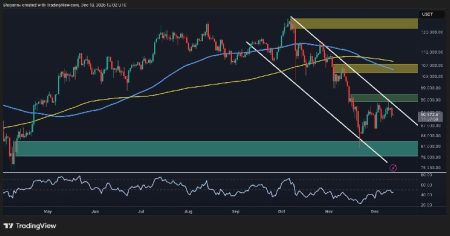Custodia and Vantage Bank Unveil Groundbreaking Tokenized Deposit Platform Nationwide
Traditional Banking Meets Blockchain in Revolutionary Financial Innovation
In a significant advancement for digital banking in the United States, Custodia Bank and Vantage Bank Texas have announced the launch of a comprehensive live platform for tokenized deposits. The initiative, revealed Thursday, transforms their earlier pilot project into a nationwide network accessible to U.S. financial institutions, potentially reshaping how Americans interact with their bank deposits in the digital age.
This pioneering platform enables participating banks to issue tokens representing insured deposits, effectively placing traditional banking assets on blockchain technology while maintaining all standard protections and regulatory compliance. The innovation bridges the gap between conventional banking and emerging financial technologies, creating a hybrid solution that satisfies both traditional banking requirements and the growing demand for digital asset capabilities.
“What we’ve developed is a compliant settlement layer that moves insured dollars at the speed of blockchain,” explains Dan Dadybayo, research and strategy lead at Unstoppable Wallet. “It maintains the same safety net but operates on new rails. For the first time, smaller institutions can compete on efficiency and programmability with larger banks.”
Regulatory Compliance at the Core of Innovation
The platform’s architecture carefully addresses regulatory concerns by ensuring full compliance with U.S. banking laws and the GENIUS Act. This adherence to regulatory frameworks means the tokens are recognized as deposit instruments rather than securities—a crucial distinction in the evolving landscape of digital assets.
Caitlin Long, founder and CEO of Custodia Bank, emphasized this regulatory alignment in communications with Decrypt, noting that multiple financial institutions have already committed to joining the platform. The Federal Reserve has shown interest as well, inviting Vantage’s CEO Jeff Sinnott to discuss the innovation at a community banking conference where the product was previewed to industry leaders.
While the platform awaits “final regulatory approval to launch at scale,” according to Long, its design represents a thoughtful approach to innovation within existing financial frameworks rather than attempting to circumvent them. This regulatory-first mindset distinguishes the Custodia-Vantage approach from other blockchain initiatives that have sometimes prioritized disruption over compliance.
Dual-Nature Technology: How the Tokenized Platform Functions
The technical innovation behind this platform lies in its ability to transform the nature of deposits depending on their location within the financial system. When held by participating banks, the tokens function as regular tokenized deposits with full FDIC insurance protection and standard banking regulations. However, when these same tokens move to external institutions or digital wallets, they behave like stablecoins—digital assets with value pegged to the U.S. dollar.
This seamless conversion is managed through “a patent-pending protocol involving both an on-chain oracle and off-chain operational controls,” Long explained. The platform leverages Infinant’s APIs and ledger infrastructure to facilitate these transitions without requiring users to manually convert between different forms of the asset.
“The key is that the very same token, issued via the same smart contract, can change its obligor and its regulatory status as it moves through its life cycle without redeeming or converting the token,” Long elaborated, highlighting the technical sophistication behind the seemingly simple user experience.
Breaking Down Barriers in Financial Infrastructure
Unlike their earlier proof-of-concept that tested Vantage’s Avit token on the Ethereum blockchain, this new deployment is engineered for practical, real-world financial transactions. The platform operates on permissionless networks, with initial test transactions conducted on Ethereum in March and development already underway to extend functionality to Bitcoin.
This approach reflects the philosophical stance of both banks toward financial infrastructure. “We share a philosophical commitment to tearing down walls, not building new ones,” Long stated, signaling a departure from the closed ecosystems often pursued by major stablecoin issuers and payment platforms that frequently develop proprietary systems or dedicated blockchains.
An FAQ document shared by Long emphasizes this distinction: “While most stablecoin issuers use omnibus legal structures that create their own legal frictions, we’re using a legal structure that supports interoperability within the law.” This commitment to open standards could prove crucial for adoption across the diverse American banking landscape, where thousands of institutions serve communities with varying needs and technological capabilities.
Potential to Reshape the U.S. Payment System
Industry experts see significant potential in this development beyond its immediate applications. “If adoption grows, this could quietly become a parallel payments network built from inside the system, not against it,” Dadybayo noted, highlighting how the innovation works within existing structures rather than attempting to replace them.
The platform maintains regulatory visibility while enhancing efficiency, as “the Fed can still see the flows through participating banks,” according to Dadybayo. This balance of innovation and oversight addresses concerns that have sometimes hindered blockchain adoption in traditional finance.
Long confirmed that multiple banks have already committed to joining the platform, suggesting momentum behind the initiative. The involvement of community banks is particularly noteworthy, as these institutions have historically struggled to compete with larger banks in terms of technological offerings. The platform could potentially level the playing field by giving smaller institutions access to blockchain capabilities without requiring massive technology investments.
As financial institutions await final regulatory clearance for full-scale deployment, the Custodia-Vantage platform represents a significant milestone in the evolution of the U.S. banking system. By combining the security and regulatory compliance of traditional banking with the efficiency and programmability of blockchain technology, it offers a vision of how financial innovation can occur within established systems rather than in opposition to them.
The coming months will reveal whether this approach can achieve widespread adoption and potentially establish a new standard for how Americans interact with their bank deposits in an increasingly digital financial landscape. What’s clear is that the wall between traditional banking and blockchain technology is becoming increasingly permeable, with potential benefits for financial institutions and consumers alike.















